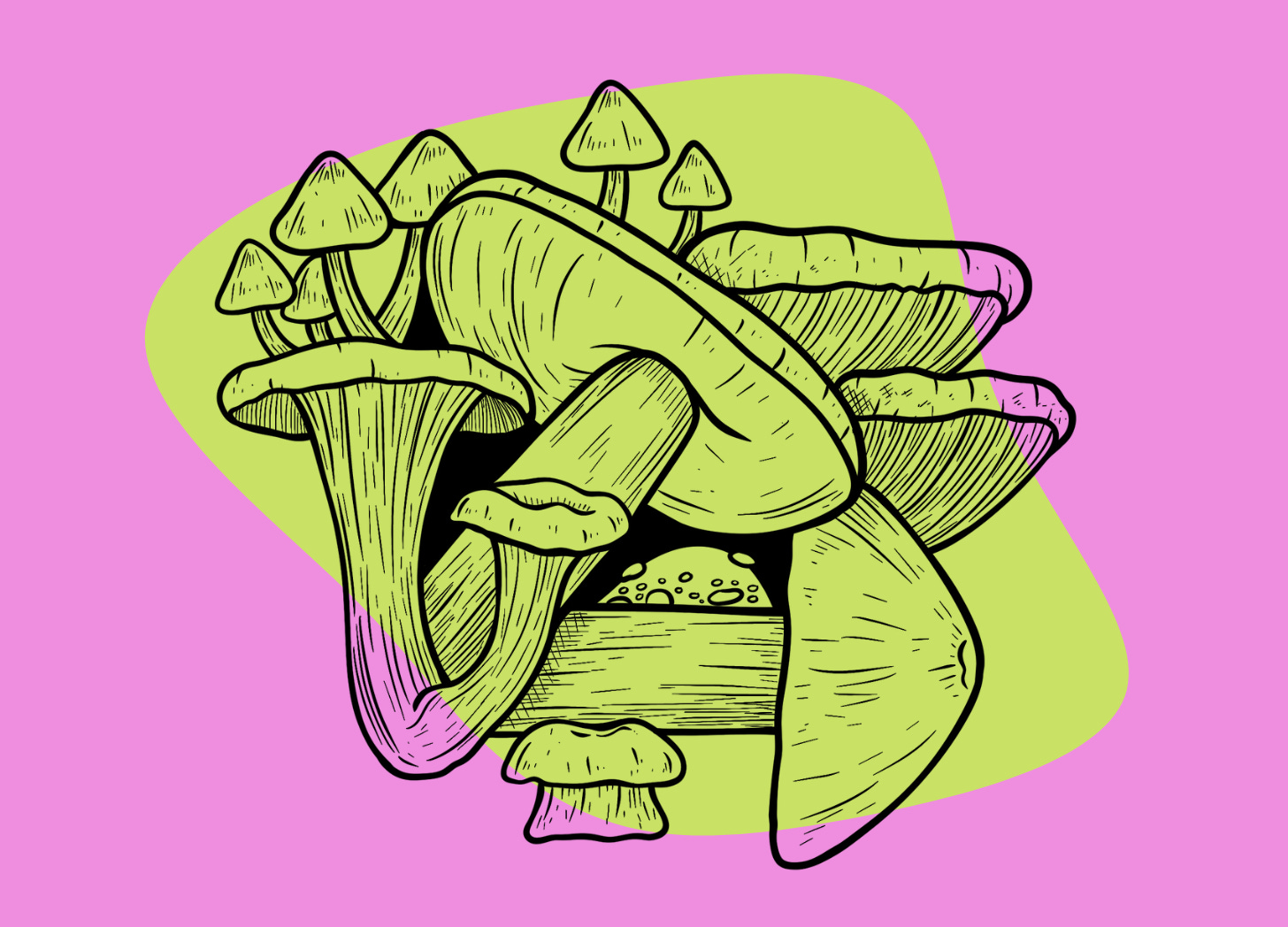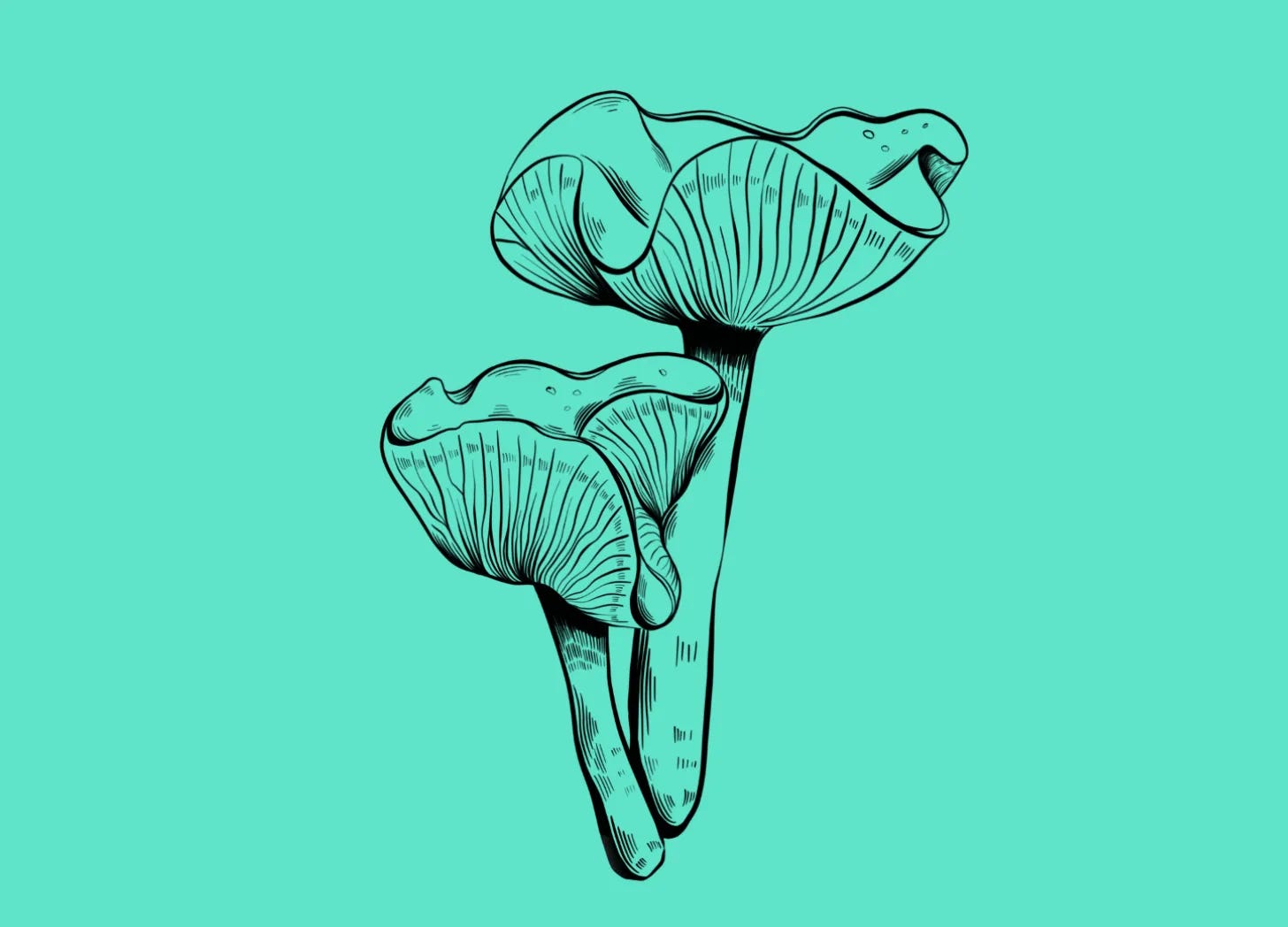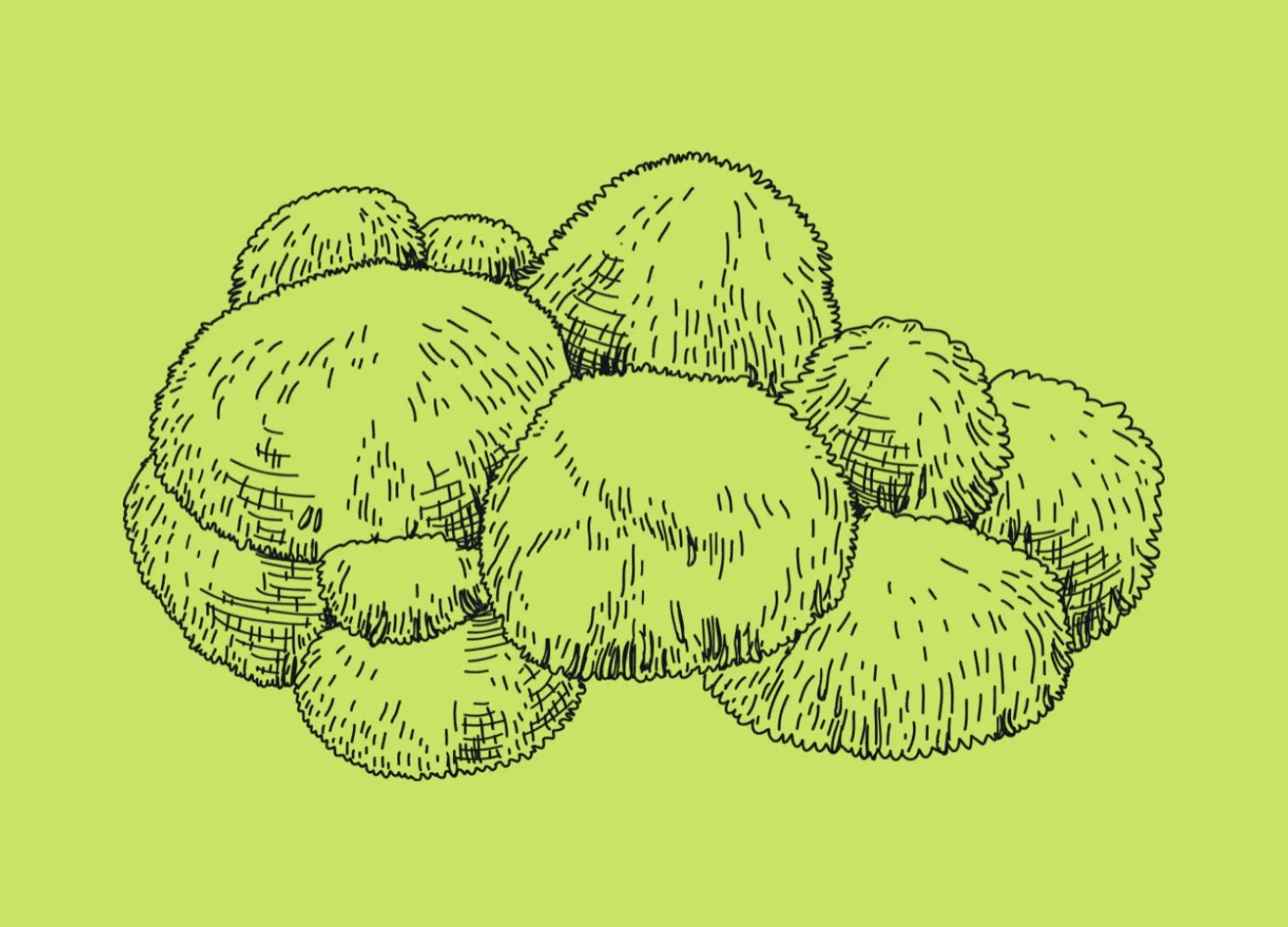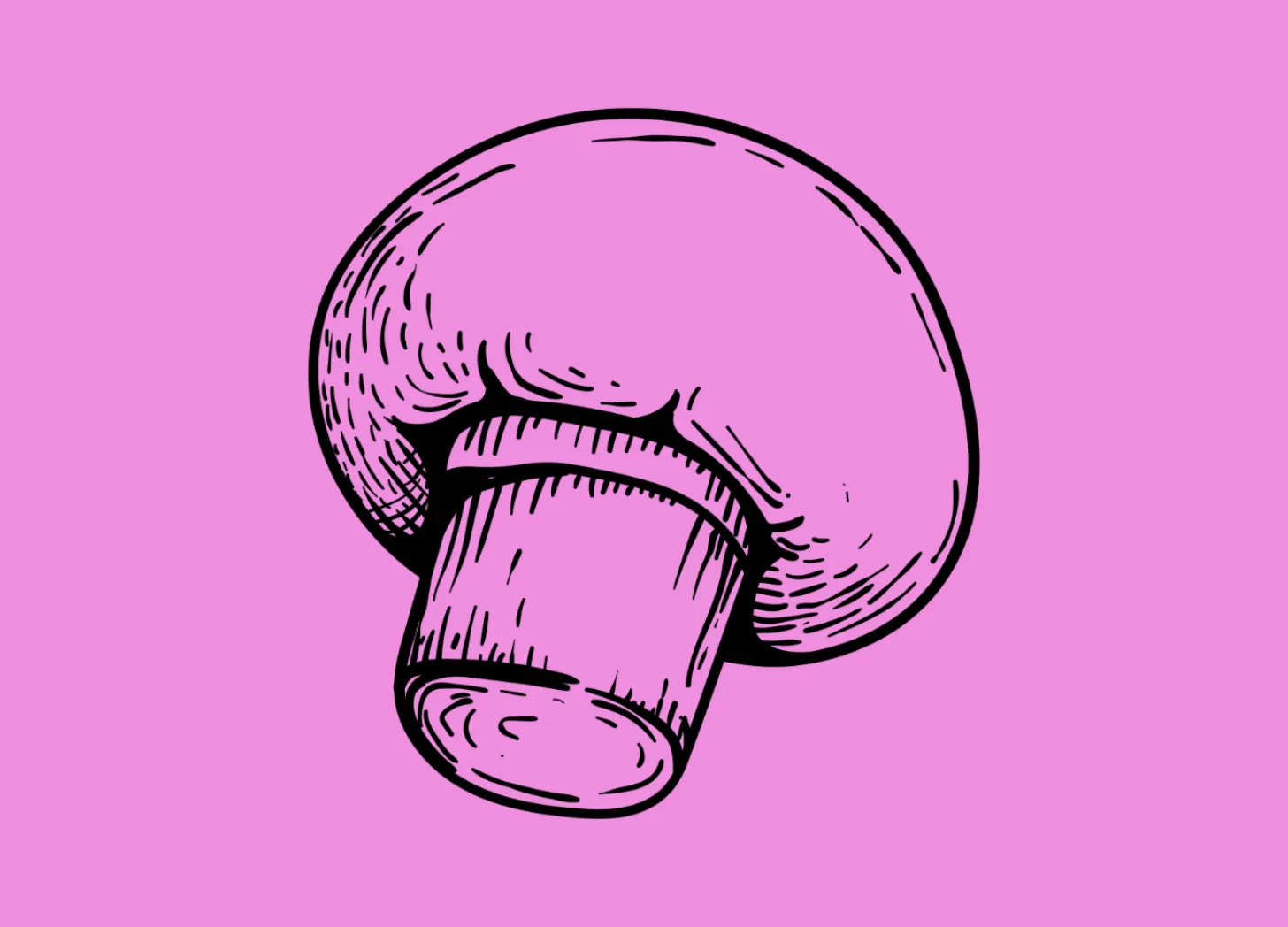The Fungal Farmer: 11 Mushrooms Anyone Can Grow At Home
Whether you want the psychedelic, medicinal, or nutritive properties of mushrooms — learning to grow them yourself can be incredibly rewarding — and surprisingly easy.
Mushrooms have been used as both food and medicine for centuries. Sadly, after several generations of urbanization, we’ve lost much of our connection with this ancient practice.
The cultivation of mushrooms for food, medicine, and sacrament has been making a major comeback over the last 20 years.
All of the mushrooms on this list have their own set of health benefits, but we can generally separate them into 3 key groups:
Psychedelic Mushrooms 🍄 — These shrooms contain psilocybin and psilocin. They’re exclusively used for their mind-altering effects. Examples include Psilocybe cubensis, Psilocybe azurescens, Psilocybe cyanescens, and Panaeolus cyanescens.
Functional Mushrooms 🧠 — Used for their widespread health benefits rather than as food. They’re usually consumed as a strong tea or in capsules. Examples include reishi (Ganoderma lucidum), lion’s mane (Hericium erinaceous), Cordyceps (Cordyceps militaris), and chaga (Inonotus obliquus).
Edible/Gourmet Mushrooms 🍲 — These mushrooms are typically used for their nutritional value and exquisite taste. Examples include Oyster mushrooms (Pleurotus spp.), button/portabello mushrooms (Agaricus bisporus), shiitake (Lentinula edodes), and enoki (Flammulina velutipes).
With some simple growing equipment and basic instructions, anyone can grow mushrooms at home.
Here are 11 species of mushrooms anybody can grow at home with relative ease.
→ Read Tripsitters Guide to Growing Magic Mushrooms.
Easiest Psychedelic Mushrooms to Grow at Home
There are well over 200 individual species of magic mushrooms. Unfortunately, most require specialized equipment and a deep understanding of mycology to be successful.
The most common magic mushroom species used by home growers, by far, is Psilocybe cubensis. This species can be cultivated with ease, and there are hundreds of individual strains from which to choose, as well as countless books on the subject.
Shrooms that didn’t make the cut (too difficult to grow):
Psilocybe azurescens — Regarded as the most potent psilocybin-containing mushroom species in the world; unfortunately, this mushroom is also notoriously difficult to grow at home.
Psilocybe tampanensis — This species is used to grow psychedelic truffles. They aren't hard to grow, but may require some extra know-how to grow strong and healthy sclerotia.
Amanita muscaria — This mushroom contains a separate psychoactive compound called muscimol. These shrooms are popular as “legal shroom alternatives” but are virtually impossible to grow at home. These mushies require a complex symbiotic relationship with living trees.
Here are the easiest psychedelic shrooms to grow at home:
Psilocybe cubensis
Psilocybe cubensis is, without a doubt, the easiest psychedelic mushroom species to grow at home. This species has been cultivated for decades and is a favorite among commercial and home growers who want to produce high yields of psilocybin-producing mushrooms.
While these shrooms aren’t the strongest, gram for gram, their ease of cultivation, relatively large size, and low-maintenance nature make them the perfect candidate for home-growing.
There are a variety of simple, well-established techniques that work great for growing this mushroom — a few examples include PF-Tek, monotubs, RR rye tek, or Uncle Ben’s Tek.
Spores are very easy to find online for this species. Vendors carry all kinds of unique strains to choose from — each with their own unique growth habits and potency.
The easiest Psilocybe cubensis strains to grow are Golden Teacher, Koh Samui, Mexicana, or the Amazon Strain.
Psilocybe cubensis Specs:
Yield: Typically Very High
Difficulty: Indoor (easy), Outdoor (easy)
Substrates: Grain, brown rice flour, vermiculite, coir (coconut fiber), & manure
Active Constituents: Psilocybin, Psilocin, & Other Tryptamines
Psilocybe cyanescens (Wavy Caps)
Psilocybe cyanescens — also known as Wavy Cap mushrooms — are psilocybin-producing mushrooms that thrive on wood (saprophytic). Although these mushrooms can sometimes be a bit finicky to cultivate using traditional indoor techniques, outdoor cultivation is easy.
Cultivation of Psilocybe cyanescens often involves preparing a raised vegetable bed with mulch and wood chips. The bed is then inoculated and left for nature to take its course. If successful, the bed should produce dense clusters of wavy caps as the temperature begins to cool in the autumn months.
If done right, the yields using outdoor woodchip beds can be immense. These mushrooms are prolific fruiters, often producing several large clusters over the course of 2–5 flushes. Be careful to keep the mycelium moist but not wet — excessive heat or water, freezing temperatures, and drought can all easily kill your mushrooms.
Wavy Caps Specs:
Yield: Moderate-High
Difficulty: Indoor (easy), Outdoor (challenging)
Substrate: Wood chips and hardwood mulch
Active Constituents: Psilocybin, Psilocin, & Other Tryptamines
Panaeolus cyanescens (Blue Meanies)
Panaeolus cyanescens — also known as Blue Meanies — is a lesser-known psilocybin mushroom species that can be grown at home. This species isn't as easy to cultivate as Psilocybe cubensis, but with the right conditions and patience, it can still yield excellent results.
The first difficulty you’ll encounter is finding spores. This species is not as popular as Psilocybe cubensis. We’ve only seen this species available from a spore vendor called SporeWorks. Usually, this species is only available in swabs or prints, which are (slightly) more difficult to use than using spore syringes.
Fortunately, sourcing is the most difficult part of growing these shrooms. Using the same methods outlined for Psilocybe cubensis, these mushrooms take well and grow quickly. These shrooms are especially easy if using dung or straw-based substrates.
Blue Meanies Specs:
Yield: Poor Yields
Difficulty: Indoor (easy), Outdoor (easy)
Substrates: Dung, straw, or compost-based substrates
Active Constituents: Psilocybin, Psilocin, & Other Tryptamines
Easiest Functional Mushrooms to Grow
Functional mushrooms are known for their health benefits, particularly for boosting the immune system, reducing stress, and improving cognitive function. Some of these shrooms could just as easily fit in the gourmet mushroom selection (lion’s mane cooked with butter tastes just like lobster), but we included them here because their medicinal properties are the most celebrated attributes.
Functional mushrooms contain a fascinating group of compounds called polysaccharides — these molecules are essentially very long, complex sugar molecules — but they don’t act like sugars. Instead, these compounds interact in complex ways with various organ systems — often exerting a unique bidirectional (balancing) action.
For example, beta-glucans from reishi mushrooms have been shown to have a balancing action on the immune system — reducing excess (such as with inflammatory disorders or autoimmunity) and boosting deficiencies (cancer, infections, and immunodeficiency disorders).
Shrooms that didn’t make the cut (too difficult to grow):
Chaga (Inonotus obliquus) — This cancer-fighting fungus requires living trees to grow, making it unsustainable and challenging for home cultivation. Researchers are still struggling to understand the complex lifecycle of this mushroom.
Cordyceps (Cordyceps militaris) — The infamous “zombie fungus” has impressive health benefits but requires very specific and difficult-to-recreate growing conditions. Even expert mycologists tend to struggle with this one.
Agarikon (Laricifomes officinalis) — This medicinal mushroom is only found in old-growth forests. While some expert mycologists have successfully cultivated it, the only utility this has proven to offer is to help preserve its diminishing population.
Lion’s Mane (Hericium erinaceus)
Lion’s mane is a peculiar-looking mushroom with long hair-like teeth rather than the traditional gills or pores found on most edible species. It’s equally delicious as it is medicinal.
Some research suggests frequent consumption of this mushroom may promote a healthy immune system and offer neuro-regenerative effects. It’s been found to increase the activity of nerve growth factor (NGF) — which is a protein associated with neuron growth and maintenance. NGF enhancement is currently being explored for use in treating all kinds of neurodegenerative and traumatic brain disorders. Biohackers take this mushroom for it’s cognitive-enhancement qualities.
This mushroom species barely made the cut to this list — it’s not as easy to grow as other mushrooms on this list, but it’s worth the effort — trust.
Lion’s mane can be grown indoors using substrate-filled bags or outdoors on logs. The main cause of failure in growing this mushroom is not maintaining adequate humidity levels. It's a common issue, but there are ways to mitigate it.
This species is slow-growing, so expect to wait several months before harvest.
Lion’s Mane Specs:
Yield: Moderate
Difficulty: Indoor (moderate), Outdoor (moderate)
Substrates: Hardwood sawdust, supplemented with wheat bran or similar
Active Ingredients: Hericenones, Erinacines
Reishi (Ganoderma lucidum)
Reishi mushrooms have been prized for their medicinal qualities since at least 300 BC. They’re revered as “the mushroom of immortality” in China and are thought to promote longevity and health.
Reishi mushrooms are a rich source of antioxidants, anti-inflammatories, and immune-boosting polysaccharides (such as beta-glucans).
This wood-eating mushroom is fairly easy to grow indoors — although beginner cultivators just starting out may struggle to get the spores to take. This species is best for someone with a little bit of experience and understands the basics.
These polypore mushrooms are typically grown in bags or buckets on hardwood substrates (sawdust or pellet). It takes several months for reishi mycelium to colonize the substrate, and the mushrooms themselves are slow-growing. They thrive at temperatures between 70-75°F (21-24°C) and require high humidity levels.
Reishi Specs:
Yield: Moderate
Difficulty: Indoor (easy), Outdoor (easy)
Substrates: Hardwood sawdust, supplemented with wheat bran
Active Ingredients: Triterpenes, Polysaccharides (including beta-glucans)
Maitake (Grifola frondosa)
Maitake, also known as "Hen of the Woods," is a medicinal mushroom revered as much for its taste for its health benefits. It's best known for its capacity to support immune health and help manage blood sugar levels.
This mushroom prefers to grow on hardwood, and while it can be cultivated both indoors and outdoors, it requires patience as the mycelium takes time to fully colonize the substrate. The fruiting bodies emerge a few months later as large, leaf-like clusters.
Maitake Specs:
Yield: Moderate
Difficulty: Indoor (moderate), Outdoor (easy)
Substrate: Hardwood sawdust, supplemented with bran
Active Ingredients: Polysaccharides, Beta-glucans
Turkey Tail (Trametes versicolor)
Turkey Tail mushrooms are named for their colorful, fan-shaped fruiting bodies that resemble the tail of a turkey. It’s revered for its ability to boost the immune system and offer support in cancer treatment.
These mushrooms are relatively easy to grow outdoors on logs or wood chips, but indoor cultivation can be tricky (this is true for wood-loving mushrooms in general). They’re slow-growing and require patience, a special focus on ventilation, and good humidity control.
Despite these requirements, growing Turkey Tail can be very rewarding, especially for those interested in its potent medicinal qualities.
Turkey Tail Specs:
Yield: Moderate
Difficulty: Indoor (moderate), Outdoor (easy)
Substrates: Hardwood logs or wood chips
Active Ingredients: Polysaccharide-K (PSK), Polysaccharopeptide (PSP), Beta-glucans
Easiest Gourmet Mushrooms to Grow
Mushroom cultivation can be treated as a form of farming, just as one might grow fruits or vegetables. In this way, one can establish a steady supply of fresh gourmet mushrooms to use in their cooking.
By far, the easiest mushroom to grow (gourmet or otherwise) are oyster mushrooms. These shrooms will grow on just about any substrate (even soil contaminated with diesel fuel), colonize rapidly, resist infection by molds and bacteria like no other, and produce bountiful yields.
But oysters aren’t the only easy-to-grow culinary shroom — species like shiitake (Lentinula edodes), lion's mane (Hericium erinaceus), and enoki (Flammulina velutipes) can be cultivated at home with minimal space and effort.
Shrooms that didn’t make the cut (too difficult to grow):
Truffles (Tuber spp.) — Truffles are valued gourmet mushrooms with an intense aroma and flavor. Unfortunately, they’re exceptionally difficult to cultivate because they require a symbiotic relationship with living trees.
Morels (Morchella spp.) — With a distinctive honeycomb appearance and a smoky, earthy flavor, morels are a springtime delicacy in many parts of the world. Cultivation of these shrooms has eluded growers for generations.
Chanterelles (Cantharellus cibarius) — These mushrooms are known for their vibrant yellow color and fruity, peppery taste, making them a popular choice for chefs. Like truffles, these shrooms require the living roots of hardwood trees to grow.
Oyster Mushrooms (Pleurotus spp.)
Oyster mushrooms such as the pearl oyster and blue-gray oyster are among the most popular mushrooms to cultivate at home. They’re easy to grow in a simple indoor setup, and good yields can be produced in a relatively short time frame.
Simple sterile practice is needed in the early stages until your substrate is fully inoculated. This is the same for all mushrooms, but oysters are far more forgiving during this sensitive stage — a boon for novice growers.
Due to the popularity of oyster mushrooms, pre-inoculated grain spawn are widely available online. These grow kits make the process even easier.
Oyster mushrooms can also be effectively grown outdoors in cooler climates. Simple mushroom beds can be created by adding grain spawn to an appropriate substrate. Mushrooms will then begin to appear sporadically throughout the year — unlike other seasonal species.
Oyster Mushroom Specs:
Yield: Typically very high
Difficulty: Indoor (easy), Outdoor (easy)
Substrates: Straw, coffee grounds, sawdust, or almost any other agricultural byproduct
Active Ingredients: Polysaccharides, particularly beta-glucans, & various vitamins and minerals
Button Mushrooms / Portabello / Cremini (Agaricus bisporus)
The common button mushroom is the most widely cultivated variety of mushroom in the world. Shockingly, they’re extremely easy to grow.
Ready-to-grow spawn bags are often available at garden centers and online spore vendors, and they aren’t particularly fussy about contamination. This is a fantastic beginner species for the complete newbie to mushroom cultivation.
The growth cycle of button mushrooms is much shorter than that of other "beginner" mushrooms, which also makes them appealing. Cultivators can produce these mushrooms in as little as a few weeks after inoculation. They produce consistent and predictable yields over a number of flushes and can be stored fresh for a long time.
These mushrooms won’t explode your palate with flavor, but they’re a great choice for beginners and th
ose wishing to produce edible mushrooms at home.
Button Mushroom Specs:
Yield: Typically very high
Difficulty: Indoor (easy), Outdoor (moderate)
Substrates: Compost or manure-based substrates
Active Ingredients: Vitamins B and D, selenium, & antioxidants
Shiitake Mushrooms (Lentinula edodes)
Shiitake mushrooms are known as “the truffles of East Asia” thanks to their rich umami flavor and pleasant texture. They grow naturally on deciduous hardwood and are relatively easy to grow indoors using bag cultivation on a sawdust or wood pellet substrate.
Shiitake can also be grown outdoors using traditional log cultivation techniques, provided your local climate is cool enough. They’re relatively hardy and are adaptable to a range of environmental conditions, but they don’t cope well with hot, dry climates.
Good yields of Shiitake mushrooms are possible through home cultivation both indoors and outdoors. Although not as fast-growing as button or oyster mushrooms, they aren’t as slow to develop as reishi or lion’s mane.
Shiitake Mushroom Specs:
Yield: Moderate-High
Difficulty: Indoor (easy), Outdoor (moderate)
Substrates: Hardwood sawdust, wood pellets, or logs
Active Ingredients: Lentinan, Eritadenine, and polysaccharides
Enoki Mushrooms (Flammulina velutipes)
Enoki are small edible mushrooms most commonly used in Asian cooking. They’re characterized by their long, thin stems and small, button-like caps.
These mushrooms are incredibly easy to grow both indoors and out using hardwood blocks or in sawdust-filled mushroom bags.
Hardwood logs can also be inoculated for outdoor cultivation. However, the season for enoki is short, and they require several months of cooler weather to thrive.
Enoki Mushroom Specs:
Yield: Moderate-High
Difficulty: Indoor (easy), Outdoor (easy)
Substrates: Hardwood sawdust, wood pellets, or supplemented hardwood blocks
Active Ingredients: Polysaccharides (incl. beta-glucans), vitamin B, & selenium (such as selenium)
Where to Find Mushroom Spores
This article wouldn’t be complete without at least some recommendations for buying spores… but please keep in mind there are plenty of excellent spore vendors outside this list; these are just the ones we like the most.
For beginner growers, we recommend starting with a mushroom grow kit — which arrives fully colonized and ready to sprout. All you have to do is open the package and give it a spray with a water mister. Grow kits cut out the complexity involved with preparing substrates, inoculation, and sterilization. They’re the perfect way to build your confidence and yield results before attempting a more hands-on grow.
If you feel ready to do the whole process from scratch yourself, we recommend starting with spore syringes as opposed to spore prints or swabs. Liquid cultures also work great and tend to colonize very quickly but are also more expensive and sensitive to damage during transport.
Spore Vendor List:
Spores MD (🇺🇸)
Spores 101 (🇨🇦/🇺🇸)
Myyco (🇺🇸)
Spore Store (🇺🇸)
Golden Teacher Spores (🇨🇦/🇺🇸)
High Desert Spores (🇺🇸)
Planet Spores (🇨🇦)
Mushroom Prints (🇨🇦/🇺🇸)
Shiny Spores (🇬🇧/🇪🇺)
Sporeslab (🇨🇦)
SporeWorks (🇺🇸)
Ralphsters (🇺🇸)
Please note: Some of the links below are affiliate links, which means that at no additional cost to you, we may earn a commission if you click through and make a purchase. This helps us to continue providing valuable content and recommendations. Thank you for supporting our work!
🍄 Read the Tripsitter Guide to Mushroom Spores
Further Reading:
How To Grow Magic Mushrooms: The Easy Way (Tripsitter)
Straightforward Guide To Uncle Ben’s Tek: The Cheapest Way To Grow Mushrooms (Tripsitter)
How to Build Outdoor Mushroom Beds (YouTube)
Simple Sawdust Substrate for Gourmet Mushroom Growing (YouTube)
Book Recommendations
Psilocybin: Magic Mushroom Grower’s Guide (Oss & Oeric: AKA Terrence & Dennis McKenna)
Growing Gourmet and Medicinal Mushrooms (Paul Stamets)
The Fungal Pharmacy: The Complete Guide to Medicinal Mushrooms and Lichens of North America (Robert Rogers)
Mycophilia: Revelations From the Weird World of Mushrooms (Eugenia Bone)
Enjoying the Trip? 🍄
Don’t Journey Alone! Tripsitter was built by a community of psychedelic advocates — but it’s people like you that allow us to thrive.
















